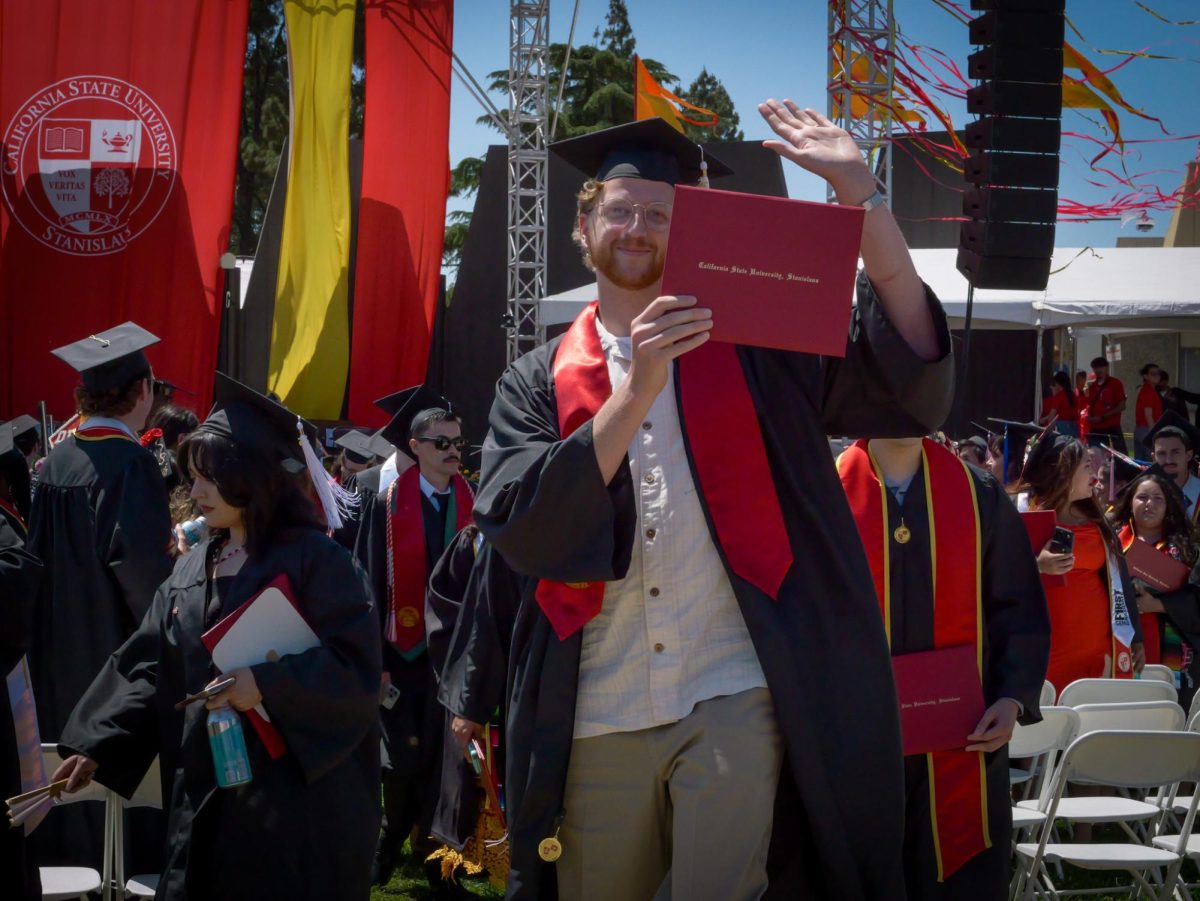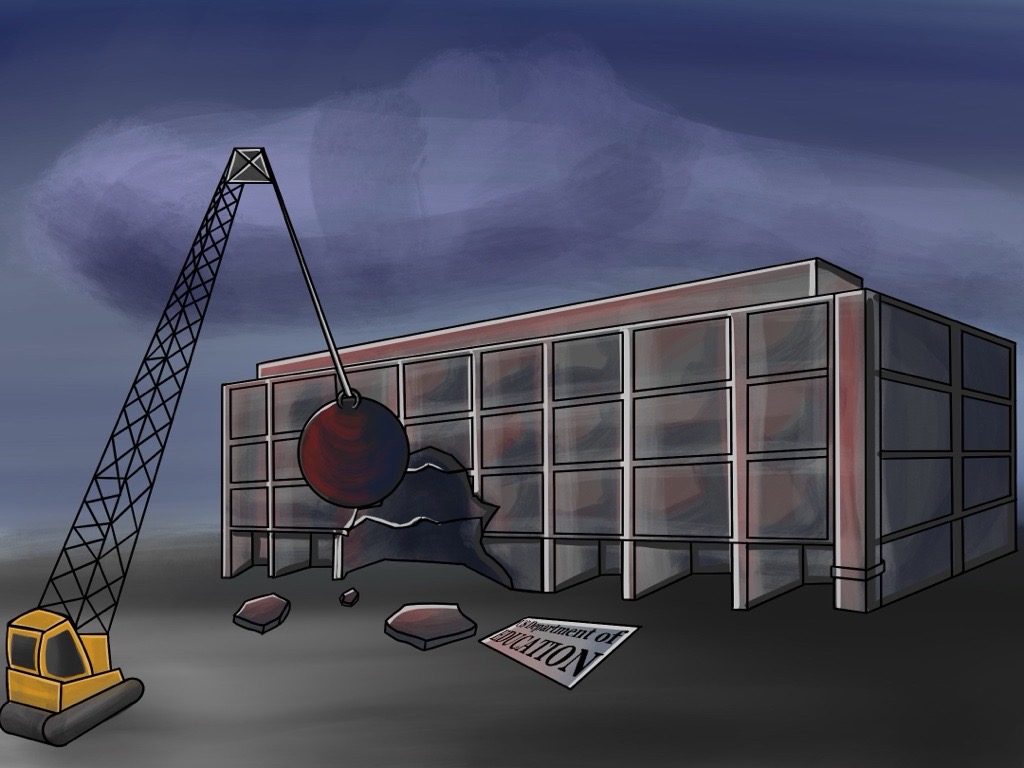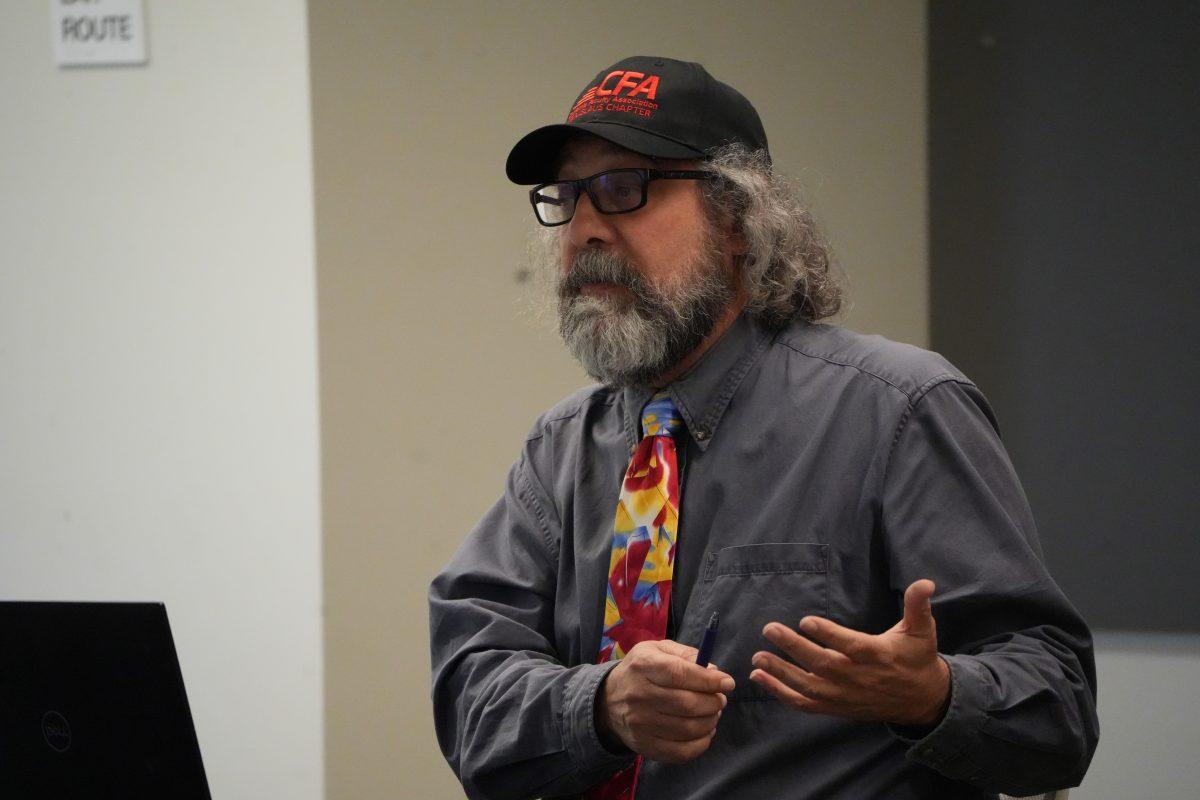On Tuesday, Feb. 14, Facilities Services at California State University, Stanislaus released a statement to all faculty and staff members regarding a new plan to discourage the more than 500 geese on campus from making the university their permanent home.
Melody Maffei, Interim Associate Vice President of Facilities Services, said the decision to reduce the rising Canada geese population comes after numerous complaints, safety hazards and increasing clean up costs.
“Over the last five years, there has been a dramatic increase in the amount of geese here on campus,” Maffei said. “They have made a huge impact on our resources to clean up after them. The geese aren’t leaving now. They stay year round instead of migrating.”
Maffei cited that the cost and time spent cleaning up after the geese, which individually produce one to three pounds of droppings per day, has put a strain on the staff of Facilities Services.
“Labor costs have grown due to the geese here on campus,” Maffei said. “Over a day’s worth of work by two workers goes into cleaning up the sidewalks.”
According to Maffei, outdoor activities, sporting events, and classes have been negatively affected by the geese and their droppings. These droppings are oftentimes accidentally brought into classrooms and buildings, creating serious health concerns.
Maffei sees this action as a preventive measure to stop the damage before it gets worse. She says that after discussing the matter with city and regional authorities as well as members of the University Facilities Advisory Committee and Department of Biological Sciences, Facilities Services has agreed upon a three-part method to deal with the escalating geese problem.
In the memorandum entitled “Geese Public Announcement,” Maffei writes, “Facilities Services will be working with a service company that specializes in the humane relocation of migratory birds.”
This hired company will employ several methods to discourage the geese from making the campus their home. They plan to bring in two Border Collies who are trained to chase, but not attack the geese. The company will also operate remote control boats to pester the geese located on the different lakes on campus.
A procedure known as egg addling will also be utilized. Egg addling prevents the eggs from fully maturing into goslings. This process, which is approved by the Department of Fish and Game and the Humane Society of the United States, includes rubbing 100% corn oil on eggs in their early stages of development. This prevents oxygen from entering the egg and allowing the embryo to fully develop. Geese are shown to rarely return to a location where they didn’t produce offspring.
Maffei assures that the methods fully comply with all legal regulations and will not injure the live birds.
Although Facilities Services is still in the contract-writing process, Maffei hopes the plan will begin in mid-March.
“It will take a couple years for a significant change to be noticed in our geese population,” Maffei said. “It takes many months to discourage their patterns.”
When asked about how this method will affect the ducks and other waterfowl on campus, Maffei said, “We are focused on the Canada geese. The ducks on campus tend to be more migratory and we do not have issues that arise from them being here. However, if ducks happen to be in locations where the geese are, they will get scared too.”
Since the memorandum was sent out, reactions have been varied among members of the University community.
Dr. Mark A. Grobner, Associate Professor and Chair of the Department of Biological Sciences, sent out a message to the faculty of CSU Stanislaus in response to the announcement.
“While facilities did contact biology, we did not endorse or disapprove the control measures,” Grobner writes. “It does appear the methods that will be employed are both reasonable and legal.”
Grobner added, speaking for the department, “We like the birds.”
Categories:
Goodbye Geese, CSU Stanislaus to lose unofficial mascots
By Cortney Megee
•
February 21, 2012
0
Donate to Signal
Your donation will support the student journalists of California State University, Stanislaus. Your contribution will allow us to purchase equipment and cover our annual website hosting costs.
More to Discover






